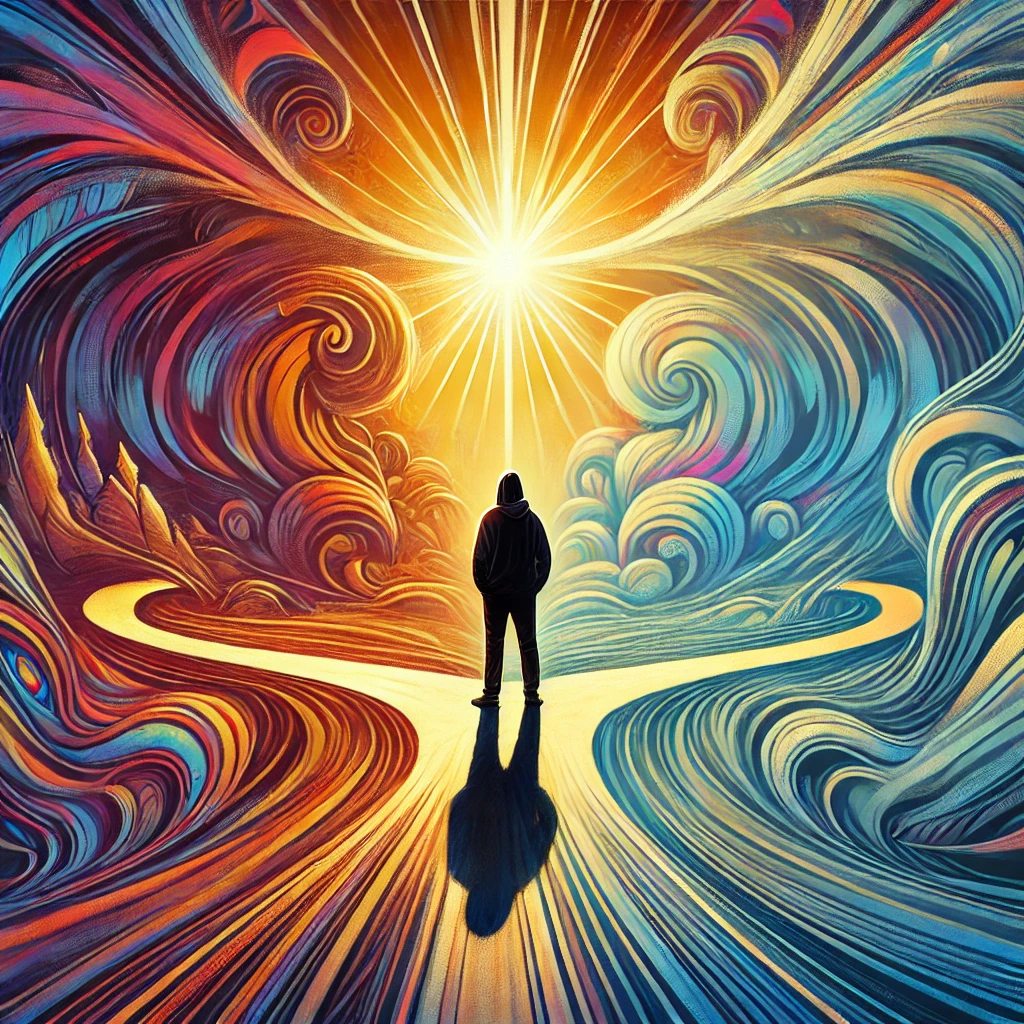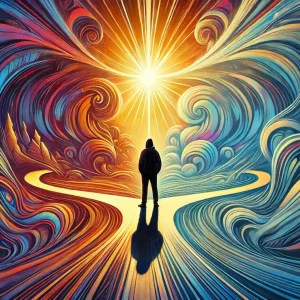- 1-Visionary Plant Medicine Integration by Coder: A Holistic Pathway for Healing and Transformation
- The Diversity of Psychedelic Integration Models: A Journey Through 10 Unique Approaches
- 2-The Holistic Model for a Balanced Life by Bourzat and Hunter: A Comprehensive Approach to Psychedelic Integration
- 3-The Realms of Integration Model by Buller and Moore: A Multi-Dimensional Approach to Psychedelic Integration
- 4-Psychedelic Harm Reduction and Integration (Gorman et al., 2021): A Compassionate Approach to Navigating Psychedelic Experiences
- 5-The Psychedelic-Inclusive Model of the Psyche by Ortigo (2021): A Deep Dive into the Mind’s Mysteries
- 6-Ayahuasca Psycho-Spiritual Integration Model by Cohen (2017): Navigating the Depths of Healing and Transformation
- 7-ACT for Psychedelic Integration (Sloshower et al., 2020): Applying Acceptance and Commitment Therapy to Psychedelic-Assisted Therapy
- 8-The ACE Model by Watts and Luoma (2020): A Compassionate Framework for Psychedelic Integration
- 9-The SAFETY Framework by Westrum and Dufrechou (2019): Guiding Principles for Psychedelic Integration
- 10-The Nature-Relatedness Model by Gandy et al. (2020): Reconnecting with Nature through Psychedelic Integration
 Psychedelics have long been recognized for their ability to provide profound insights into the mind, offering individuals a unique window into the depths of their consciousness. The Psychedelic-Inclusive Model of the Psyche by Ortigo (2021) offers an innovative framework for understanding the human mind through the lens of psychedelic experiences.
Psychedelics have long been recognized for their ability to provide profound insights into the mind, offering individuals a unique window into the depths of their consciousness. The Psychedelic-Inclusive Model of the Psyche by Ortigo (2021) offers an innovative framework for understanding the human mind through the lens of psychedelic experiences.
Inspired by Jungian psychology and integrating concepts from psychedelic science, this model provides a comprehensive view of how psychedelics can reveal both the conscious and unconscious layers of the psyche, helping individuals achieve deep healing and personal growth.
The Foundations of the Psychedelic-Inclusive Model
The Psychedelic-Inclusive Model of the Psyche recognizes that psychedelic experiences provide access to a broader range of mental and emotional material than traditional therapy often reaches. This model draws on principles from depth psychology, particularly the work of Carl Jung, who explored the intricate layers of the human mind—especially the unconscious.
Ortigo’s model suggests that psychedelics enable individuals to tap into the collective unconscious, a reservoir of shared experiences, symbols, and archetypes that are present in all human minds. By exploring the deeper layers of the psyche, individuals can confront their personal shadows, unearth repressed memories, and connect with archetypal forces that shape their lives.
The psychedelic experience in this model is viewed as a journey through the mind’s multidimensional layers, where personal and collective material can emerge. Each experience is an opportunity to gain insight into different facets of the self, leading to increased psychological awareness and integration.
The Structure of the Psyche in Ortigo’s Model
The Psychedelic-Inclusive Model of the Psyche divides the mind into four primary layers or dimensions, each representing different aspects of the individual’s mental and emotional life:
- The Conscious Mind
- The Personal Unconscious
- The Collective Unconscious
- Archetypal and Transpersonal Realms
Each layer interacts with the others, creating a dynamic and ever-evolving picture of the psyche. Psychedelics allow individuals to traverse these layers, bringing unconscious material to the surface, illuminating hidden aspects of the self, and fostering personal and transpersonal insights.
1. The Conscious Mind: Everyday Awareness
The Conscious Mind represents the part of the psyche that individuals are most familiar with—the thoughts, emotions, and experiences that are part of their waking life. This is where people actively engage with their environment, make decisions, and interact with the world around them.
In the context of psychedelics, the conscious mind is often the starting point for the journey. Psychedelics can temporarily expand consciousness, allowing individuals to experience heightened perception, altered states of awareness, and shifts in their usual way of thinking.
Psychedelic experiences at this level may involve insights into daily life, such as understanding personal habits, behaviors, or relationship patterns from a fresh perspective.
2. The Personal Unconscious: Exploring Repressed Material
Beneath the conscious mind lies the Personal Unconscious, which contains memories, emotions, and experiences that have been repressed or forgotten. In Jungian terms, this part of the psyche often includes the shadow—the aspects of the self that are hidden or denied due to fear, shame, or social conditioning.
During psychedelic experiences, individuals often encounter material from their personal unconscious. This can involve confronting unresolved traumas, repressed emotions, or hidden fears. Psychedelics create a loosening of psychological defenses, allowing individuals to process these emotions and experiences in a new way.
Healing within the personal unconscious can be incredibly transformative, as individuals gain access to parts of themselves that were previously blocked or suppressed. This can lead to emotional catharsis and the integration of shadow aspects, resulting in a more holistic sense of self.
3. The Collective Unconscious: Universal Symbols and Archetypes
The Collective Unconscious is a deeper layer of the psyche, containing symbols, motifs, and archetypes that are shared across all of humanity. According to Carl Jung, these archetypes are universal patterns of behavior, emotion, and experience that manifest in dreams, myths, and art.
Psychedelics provide a gateway into the collective unconscious, where individuals may encounter archetypal figures, such as the Hero, the Wise Old Man, the Shadow, or the Anima/Animus. These experiences can offer profound insights into one’s life, helping individuals understand their personal narrative in the context of universal human experiences.
For example, someone on a psychedelic journey may have a vision of confronting a dragon, symbolizing their battle with inner fears or unresolved issues. Understanding these symbols in the context of the collective unconscious allows individuals to make sense of their inner struggles, fostering deeper self-awareness and personal growth.
4. Archetypal and Transpersonal Realms: Beyond the Self
At the deepest levels of the psyche lie the Archetypal and Transpersonal Realms, which transcend the personal and connect the individual to the larger, spiritual forces at play in the universe. This realm goes beyond the ego and personal identity, offering individuals an opportunity to experience the divine, the cosmic, or the mystical.
During psychedelic journeys, individuals may encounter mystical experiences, such as feelings of unity with the universe, encounters with spiritual entities, or a sense of merging with a higher consciousness. These experiences often evoke a sense of awe, reverence, and oneness with all life.
The Archetypal and Transpersonal Realms represent the highest potential for self-transcendence and spiritual awakening. For many, these experiences serve as a source of meaning and purpose, reinforcing a sense of connection to the larger mysteries of existence.
Integration: Bringing the Insights Back to Life
While psychedelics provide access to these different layers of the psyche, the real work begins after the experience. The Psychedelic-Inclusive Model of the Psyche emphasizes the importance of integration, a process that involves making sense of the insights gained during the journey and applying them to everyday life.
Integration might involve:
- Therapeutic processing of unconscious material brought to light during the experience.
- Journaling or creative expression to explore archetypal symbols or spiritual insights.
- Spiritual practices such as meditation or mindfulness to nurture the connection with the transpersonal realm.
- Talk therapy to work through repressed memories or emotions encountered in the personal unconscious.
By engaging with the insights gained from each layer of the psyche, individuals can achieve deep emotional healing, personal growth, and spiritual transformation.
Why the Psychedelic-Inclusive Model is Important
The Psychedelic-Inclusive Model of the Psyche offers a comprehensive and nuanced understanding of the human mind, allowing individuals to explore the deeper layers of their psyche through psychedelic experiences. This model is important because it integrates both personal psychology and transpersonal experiences, providing a complete picture of how psychedelics can help individuals heal on multiple levels.
By embracing Jungian concepts like the collective unconscious and archetypal symbolism, this model allows individuals to make sense of their psychedelic experiences in ways that extend beyond the personal, linking their journeys to the broader human experience. This can foster a greater sense of connection, meaning, and purpose, which are often key outcomes of transformative psychedelic experiences.
The Psychedelic-Inclusive Model of the Psyche by Ortigo is a powerful tool for understanding how psychedelics can unlock the deeper layers of the mind. From the conscious mind to the transpersonal realm, this model provides a roadmap for exploring the psyche’s complexities, offering individuals opportunities for profound healing and personal transformation. By integrating the insights gained through psychedelic experiences, individuals can navigate the shadowy depths of their unconscious, connect with universal symbols, and ultimately experience spiritual transcendence.




